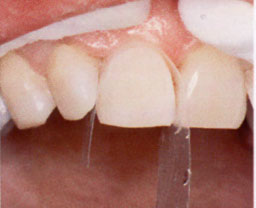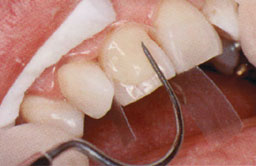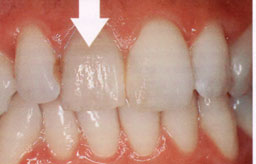Veneers
Veneers
What is a facing?
You want beautiful white teeth? Or do you want to get rid of a gap between your teeth? Or do you want to have a broken tooth repaired? With the help of a so-called facing, the dentist can enhance the appearance of your teeth.
A facing is a layer of tooth-colored composite filling material or a shield of porcelain. The dentist sticks the filling material on the tooth. For example, he can change the shape or color of a tooth. He can also fill gaps between teeth, repair broken corners, make yellow or brown teeth white again and mask crooked teeth.
How long does a facing last?
A facing lasts five to ten years and sometimes longer. Smoking and drinking a lot of coffee or tea promotes discoloration. A facing can wear out or be damaged if, for example, you grind your teeth or bite your nails. The dentist can always repair or replace a worn or damaged facing. This treatment does not damage the tooth itself.
What material are veneers made of?
A facing is made of composite or porcelain. For a composite facing, the dentist generally has to grind less on your tooth. The result is also more predictable and the costs are considerably lower than with a porcelain facing. On the other hand, a porcelain facing is less sensitive to attack on the surface.
What does the treatment for a facing consist of?
Applying a facing takes place in a number of steps. A composite facing is applied by the dentist in one treatment. A porcelain facing is made in a dental laboratory. Therefore, you should visit your dentist at least twice.
Step-by-step treatment for a composite facing
Choosing the color
First, the dentist chooses the right color for your facing in consultation with you. The dentist can immediately show you the effect of the desired color. He has different colors at his disposal that he can combine with each other. You can compare it to mixing different types of paint.

Determine the desired color
Grinding the tooth
If necessary, the dentist will grind a very thin layer from the surface of your tooth. This way he makes room for the facing. If this does not happen, your tooth will thicken slightly.

After the unground tooth has been pre-treated with an acid, the surface appears matte
Bonding of the facing
Before your dentist sticks the composite to your tooth, he pre-treats your tooth with an acid. He also applies an adhesive layer to your tooth. He attaches the still soft composite to this layer.

The adhesive layer has been applied
Shaping the facing
After your dentist has glued the composite to your tooth, he first roughly shapes the filling material into the correct shape. The dentist shines a blue light on the composite when the desired shape has been achieved. This makes the composite hard. Finally, he grinds the composite into the desired shape and polishes the surface. Then the facing is ready. If you do not like the shape or color, your dentist can immediately correct the facing after grinding away a layer of composite.

The dentist roughly shapes the composite on the surface
Step-by-step treatment for a porcelain facing
Choosing the color
During the first treatment, your dentist will determine the correct color of the facing in consultation with you. He uses a color sample for this. Your facing is then made in this color in the dental laboratory.
Grinding the tooth
With a porcelain facing, the dentist almost always has to grind away the enamel. A porcelain facing must be at least half a millimeter thick.
Shaping the facing
Your dentist makes an impression of your tooth. That print goes to the dental lab. There they make your facing in the desired shape.
Bonding of the facing
During the second treatment, the dentist applies the facing. Before the dentist sticks the veneer to your tooth, he pre-treats your tooth with an acid. He also applies an adhesive layer to your tooth. He sticks the facing on this layer. If you do not like the shape or color of the facing, a completely new facing must be made in the dental laboratory.

Porcelain veneers on a mould

The tooth is discolored

A porcelain facing is placed on the tooth
What does a facing feel like?
A veneer feels like your own tooth. You may have to get used to it first. Talking can be a bit of a problem at first if your teeth have been lengthened. If the dentist has changed the shape of your teeth a lot, sounds can be distorted. This will go away on its own after a few days.
Can you eat anything with a veneer?
You can eat anything with a facing. But you should not bite on hard things, such as candy, your nails or a pen, for example. It is also not recommended to tear off adhesive tape with your teeth, for example.
Does a facing require extra maintenance?
A facing does not require any additional maintenance. As always, you will have to keep your teeth clean. Brush with a soft toothbrush. Use dental floss regularly to clean between the teeth.
What does a facing cost?
The cost of a facing depends, among other things, on the material used by the dentist. A composite facing is considerably cheaper than a porcelain facing. This price difference is caused, among other things, by the costs of the dental laboratory. Your dentist can indicate what the treatment will cost.